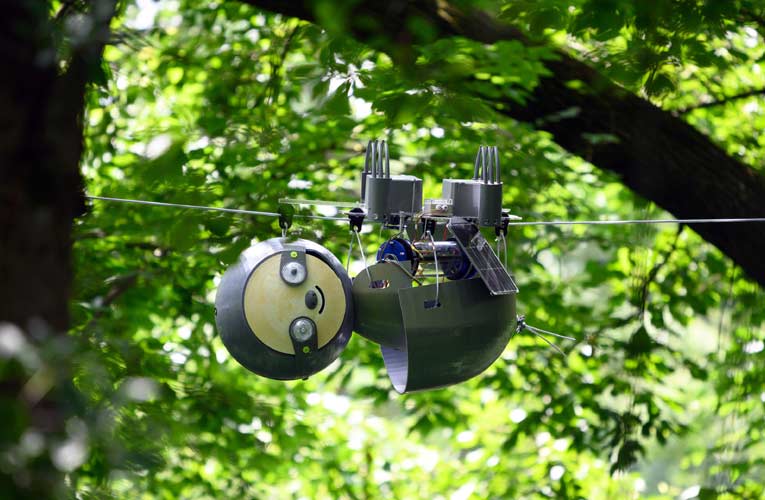
SlothBot is a slow-moving and energy-efficient robot built by robotics engineers at the Georgia Institute of Technology. Taking advantage of the low-energy lifestyle of real sloths, the solar-powered SlothBot demonstrates how being slow can be ideal for certain applications. It can linger in the trees to monitor animals, plants, and the environment below. Using innovative power management technology, the SlothBot moves along a cable strung between two large trees as it monitors the temperature, weather, carbon dioxide levels, and other information in the Garden’s 30-acre midtown Atlanta forest.
Being slow and hyper-energy efficient SlothBot lingers in the environment to observe things we can only see by being present continuously for months or even years. Its whimsical 3D-printed shell helps in protecting its motors, gearing, batteries, and sensing equipment from the weather. The robot is programmed to move only when necessary and will locate sunlight when its batteries need recharging. At Atlanta Botanical Garden, SlothBot will operate on a single 100-foot cable but in larger environmental applications, it will be able to switch from cable to cable to cover more territory.
SlothBot is the union of robotics and technology with conservation. Supported by the National Science Foundation and the Office of Naval Research, it could help scientists better understand the abiotic factors affecting critical ecosystems, providing a new tool for developing information needed to protect rare species and endangered ecosystems. Besides conservation, it can help in precision agriculture, where its camera and other sensors traveling in overhead wires could provide early detection of crop diseases, measure humidity, and watch for insect infestation.
The prototype of SlothBot was launched in the Atlanta Botanical Garden in May 2019 at the International Conference on Robotics and Automation. After testing in the Atlanta Botanical Garden, the researchers plan to move SlothBot to South America to observe orchid pollination or the lives of endangered frogs.

